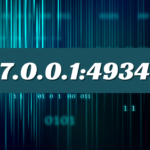Optimizing Your Portfolio: Bitcoin and Cosmos Interoperability
- 1 Understanding Bitcoin and Its Limitations
- 2 Cosmos: Bridging the Gap
- 3 Key Features of Cosmos
- 4 Overview of Existing Interoperability Projects
- 5 Pros and Cons of Different Approaches
- 5.1 Enhanced Liquidity and Usability of Bitcoin
- 5.2 Unlocking DeFi Opportunities for Bitcoin Holders
- 5.3 Expanding the Cosmos Ecosystem
- 5.4 Reducing the Environmental Impact of Bitcoin
- 6 Risks and Considerations
- 6.1 Security and Trust Issues
- 6.2 Regulatory Challenges and Compliance
- 6.3 Market and Adoption Risks
- 6.4 Technology and Development Risks
- 7 Future Prospects and Developments
- 7.1 Ongoing Projects and Partnerships
- 7.2 Potential Impact on the Crypto Market
- 7.3 Predictions and Expert Opinions
- 7.4 Long-Term Vision for Interoperability
- 8 Conclusion
In the ever-evolving blockchain landscape, where interoperability plays a pivotal role in connecting decentralized ecosystems, we delve deep into the subject, highlighting two significant players: Bitcoin and Cosmos. Our primary focus is understanding why interoperability between these giants is vital, how it can be achieved, and its potential implications for investors and users. It’s worth noting that amidst this dynamic environment, innovations contributing to the broader blockchain ecosystem are shaping how users interact with digital assets and decentralized technologies. In addition, you can find an investment education company to start your learning journey by visiting Immediate GPT.
Understanding Bitcoin and Its Limitations
Bitcoin as the Pioneer
Bitcoin, introduced by an anonymous entity using the pseudonym Satoshi Nakamoto in 2009, is the world’s first cryptocurrency. Its significance lies in establishing the foundational principles of blockchain technology, including decentralization, transparency, and security.
Key Characteristics and Limitations
Despite its pioneering status, Bitcoin faces several limitations. Its scalability issues have been a topic of concern, with network congestion and high transaction fees during periods of high demand. Additionally, Bitcoin lacks the ability to execute smart contracts, which have become a fundamental feature in the broader blockchain landscape.
The Role of Bitcoin
Bitcoin continues to serve as digital gold, a store of value, and a hedge against inflation. Its role in the crypto ecosystem is irreplaceable, but addressing its limitations is essential for its continued relevance.
Cosmos: Bridging the Gap
Introduction to the Cosmos Network
Cosmos, on the other hand, is a blockchain platform designed with interoperability in mind. Launched in 2019, it aims to connect different blockchains and enable them to communicate seamlessly.
Cosmos Hub and Its Role in Interoperability
The Cosmos Hub is the central point for interoperability in the Cosmos Network. It facilitates communication between various blockchains within the ecosystem.
Key Features of Cosmos
Two key features enable Cosmos to enhance interoperability:
Inter-blockchain Communication (IBC): IBC enables different blockchains to send and receive tokens and data, fostering cross-chain interactions.
Tendermint Consensus Algorithm: Tendermint, the consensus algorithm used by Cosmos, provides security and scalability, making it an ideal choice for interconnecting blockchains.
Overview of Existing Interoperability Projects
Several projects aim to bridge Bitcoin and Cosmos:
Interledger Protocol (ILP): ILP is a protocol designed to enable payments between different ledgers, including Bitcoin and Cosmos.
Wrapped Bitcoin (WBTC) on Cosmos: WBTC represents Bitcoin on the Cosmos Network, allowing it to participate in the Cosmos ecosystem.
Pros and Cons of Different Approaches
Each interoperability approach has its pros and cons. ILP provides flexibility but may raise security concerns, while WBTC offers direct exposure but may limit usability within the Cosmos ecosystem.
Enhanced Liquidity and Usability of Bitcoin
Interoperability opens up new possibilities for Bitcoin holders. It allows Bitcoin to be used within the Cosmos ecosystem, providing enhanced liquidity and usability.
Unlocking DeFi Opportunities for Bitcoin Holders
Interoperability paves the way for Bitcoin’s integration into decentralized finance (DeFi) applications on Cosmos, allowing Bitcoin holders to access yield farming, lending, and other DeFi services.
Expanding the Cosmos Ecosystem
Bitcoin interoperability enriches the Cosmos ecosystem by introducing one of the most significant cryptocurrencies into its network. This can attract more developers and users to Cosmos-based projects.
Reducing the Environmental Impact of Bitcoin
Cosmos, with its energy-efficient Tendermint consensus, can potentially offer a more sustainable alternative for Bitcoin transactions, reducing the network’s carbon footprint.
Risks and Considerations
Security and Trust Issues
Interoperability between blockchains raises security and trust concerns. Users need assurance that their assets are safe when moving between Bitcoin and Cosmos.
Regulatory Challenges and Compliance
Navigating regulatory frameworks for cross-chain transactions and decentralized finance could pose challenges for interoperability projects.
Market and Adoption Risks
Interoperability’s success depends on market acceptance and adoption. Fluctuations in demand and market sentiment can affect the viability of such projects.
Technology and Development Risks
Interoperability projects must stay technologically updated to adapt to evolving blockchain ecosystems. Staying ahead of potential vulnerabilities and network upgrades is essential.
Future Prospects and Developments

Ongoing Projects and Partnerships
Numerous projects are actively working on Bitcoin-Cosmos interoperability solutions. Collaborations and partnerships between these projects can drive innovation in this space.
Potential Impact on the Crypto Market
Successful Bitcoin-Cosmos interoperability could reshape the crypto landscape, offering investors, traders, and developers new opportunities and challenges.
Predictions and Expert Opinions
Blockchain experts and industry analysts offer insights into the potential impact of interoperability, though the future remains uncertain.
Long-Term Vision for Interoperability
Interoperability is a journey, and its long-term vision includes a seamlessly connected blockchain universe where assets and data flow freely between networks.
Conclusion
The quest for interoperability between Bitcoin and Cosmos represents a significant step toward optimizing portfolios and expanding the capabilities of both networks. While challenges and risks exist, the potential benefits for investors and users are undeniable. As the crypto space continues to evolve, the pursuit of interoperability remains a focal point for innovation and growth.




















